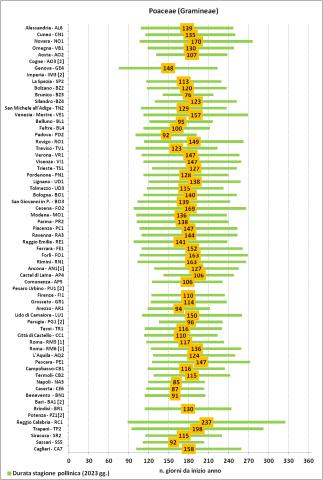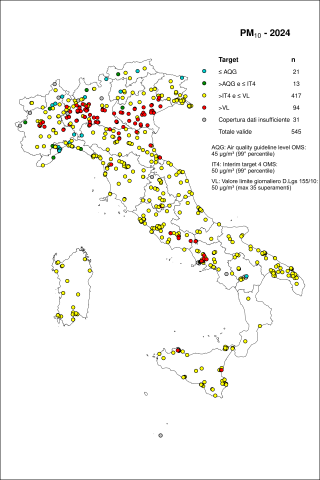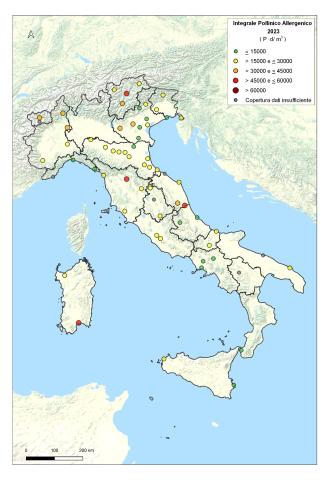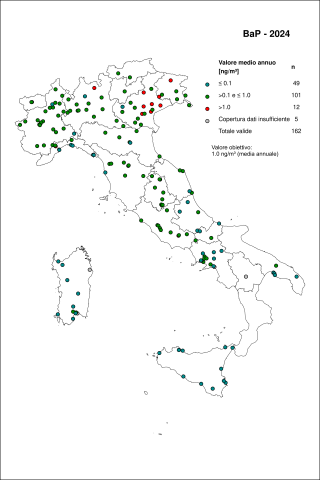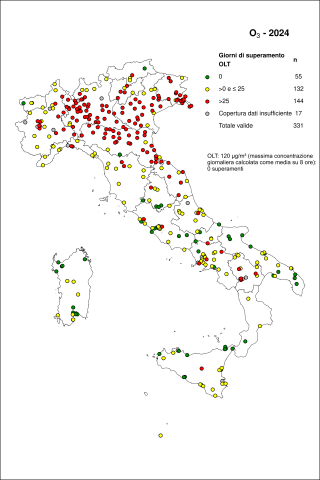The indicator is based on information related to air quality plans which, according to Directive 2008/50/EC (and its national transposition, Legislative Decree 155/2010), must be adopted in case of exceedances of the limits set for major air pollutants.
At the national level, information on air quality plans, communicated by the regions and autonomous provinces in the format required by Decision 2011/850/EU, is collected and stored by ISPRA in the InfoAria database, and subsequently transmitted to the European Commission (EC) "within two years of the end of the year in which the first exceedance was observed" (Directive 2008/50/EC, Article 23).
This information does not need to be transmitted annually, but only when new elements are to be reported. Therefore, both the information submitted in 2024 and the data provided in previous years by regions/autonomous provinces that were not required to submit new data are analysed.
The analysis shows that the measures reported in 2023 (adopted following exceedances recorded in 2021) and those previously submitted and still in force total 517, of which 50% fall within the Road Transport sector and 17% within the Residential and Commercial sector.
The above-mentioned analysis shows that the measures reported in 2024 (adopted following exceedances of limit values recorded in 2022), together with those submitted in previous years and still in force, amount to a total of 527. Of these, 50.1% fall within the Road transport sector and 17.5% within the Residential and commercial sector.
